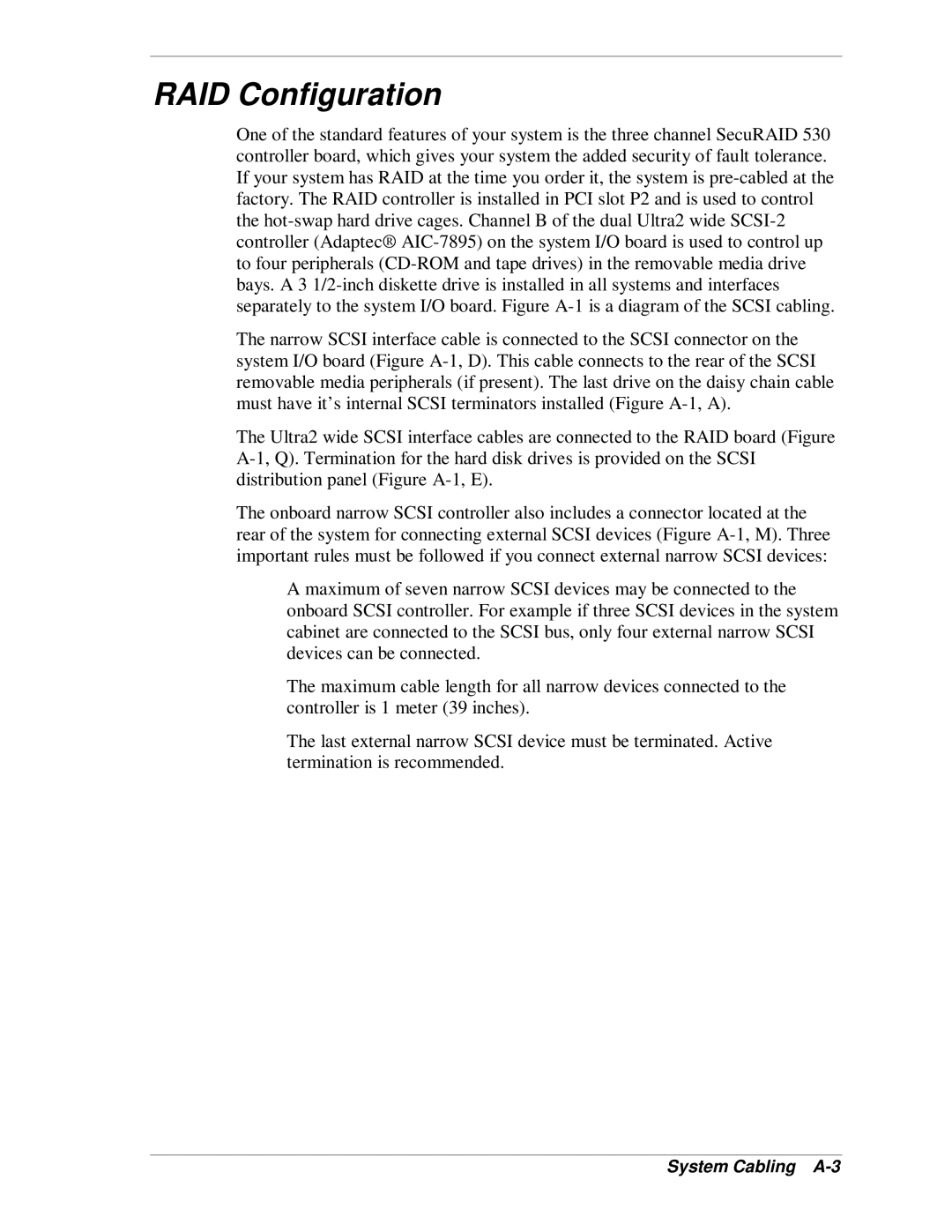
RAID Configuration
One of the standard features of your system is the three channel SecuRAID 530 controller board, which gives your system the added security of fault tolerance. If your system has RAID at the time you order it, the system is
The narrow SCSI interface cable is connected to the SCSI connector on the system I/O board (Figure
The Ultra2 wide SCSI interface cables are connected to the RAID board (Figure
The onboard narrow SCSI controller also includes a connector located at the rear of the system for connecting external SCSI devices (Figure
A maximum of seven narrow SCSI devices may be connected to the onboard SCSI controller. For example if three SCSI devices in the system cabinet are connected to the SCSI bus, only four external narrow SCSI devices can be connected.
The maximum cable length for all narrow devices connected to the
Tcontroller is 1 meter (39 inches).
The last external narrow SCSI device must be terminated. Active termination is recommended.
